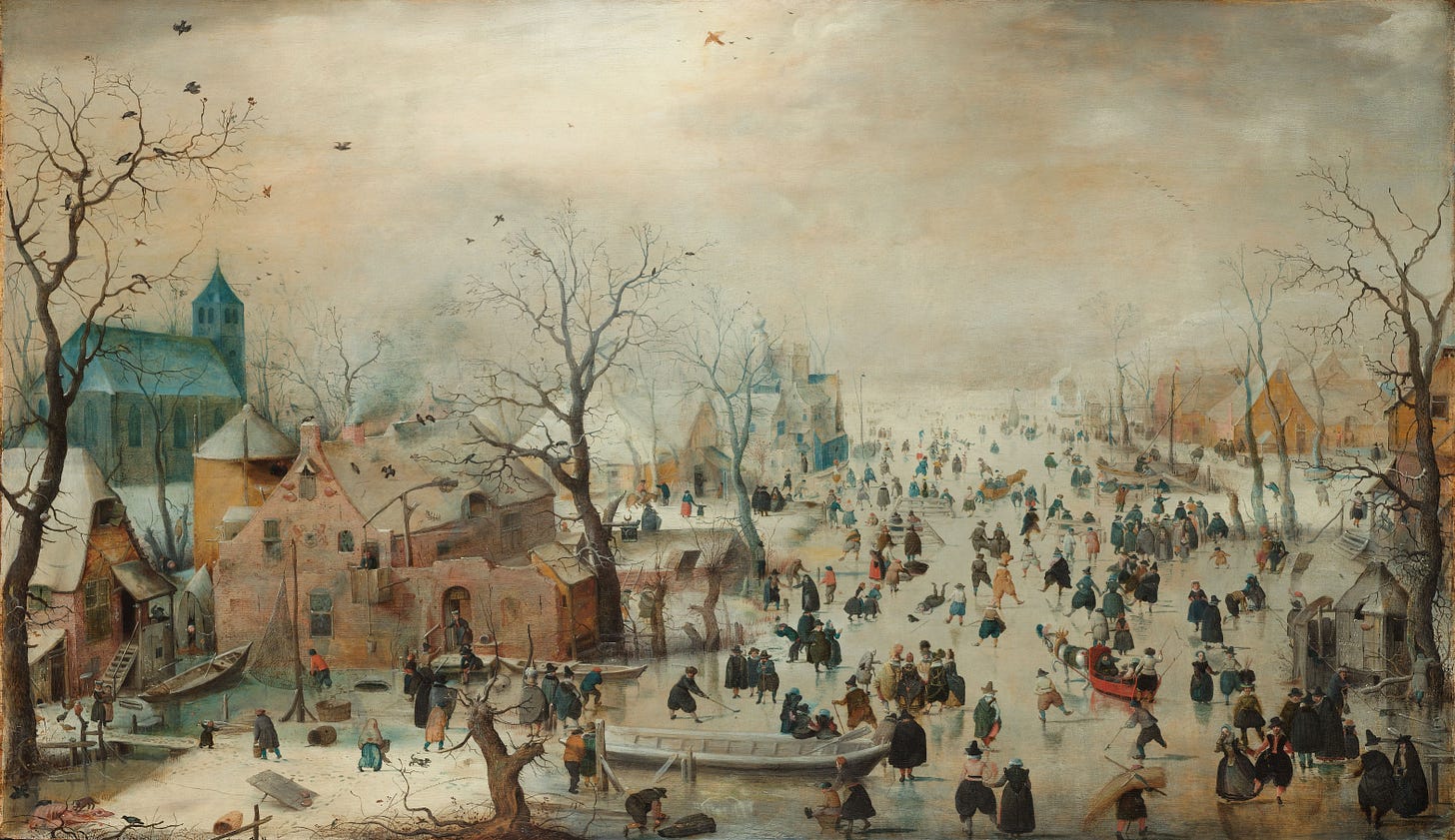I added a new section—Hot Linkjes—interesting Dutch-related reads I discovered this week. Check it out, enjoy, etc.

This year is on track to be the wettest since the Dutch started tracking the weather in 1906.
1906!
And isn’t that odd, considering how dry it was this summer?
This week, let's engage in one of our most beloved national pastimes: complaining about the weather! But enhanced with charts.
What even is this place

It rains a lot in the Netherlands even when it’s not raining more than normal.
The Netherlands is located at “the height of a weather front,” where warm, moist air from the south collides with dry, cold air from the north. As the southern air cools, the water in the air condenses and becomes rain.
Officially this is climate type Cfb—temperate, no dry season, warm summer.
Yes, it is raining more than normal
This chaotic chart from the Dutch Meteorological Institute (KNMI) above illustrates what’s going on this year. Bear with me:
The thick black line represents the average amount of rain in 30 days from 1991 - 2020. The thin black line represents the maximum amount of rain observed since 1906.
The blue represents days with more rain than normal, the brown days with less rain—showing how wet and dry periods have alternated this year.
See the blue peak on the right?
“Never before has so much rain fallen as this year between 13 October at 12 November.”

The annual amount of rain in the Netherlands has increased twenty percent since 1906.
One hundred years ago, about 700 millimeters of rain fell every year. Today, the average annual rainfall is around 850 millimeters—except for 2023. Precipitation this year is expected to amount to… 1079 millimeters.
The climate change specifics
The KNMI attributes the increase in rainfall to—you guessed it—climate change.
The hotter the temperatures, the more evaporation. The more evaporation, the more precipitation, and the more frequent, and more intense, the storms.
If we continue at our current rate of carbon dioxide emissions, the KNMI predicts 30 “tropical days” (with temps over 30 degrees) per year. Now there are five. If emissions are reduced, so will the severity of our weather changes.
Calculations with climate models show that precipitation in the Netherlands will increase in winter and decrease in summer. But how strong varies from model to model. In about half of the models, winter precipitation increases more strongly than the decrease in summer, and in the other half it is the other way around.
“When designing the Netherlands,” according to a recent KNMI report, “we must take both possibilities into account.”
Due to a terrible combination of a lot of rain and technical fault in the water management system, Amsterdam “narrowly avoided” flooding during storm Ciarán a few weeks ago. Water management officials recognized the water level rise and moved fast to close the series of 14 locks that protect the city.
“I have never seen the water level so high, and neither have older colleagues,” said an official from the Rijkswaterstaat, the water authority. “It will happen again in the coming years. The question is not if, only when.”
🔥 Hot Linkjes
Politics
Since there are so many parties (26 in the upcoming election—26!), Dutch politics operates “like a supermarket of almost perfect voter choice,” and “is a lead indicator of where other European voters are headed.” And what direction is that? Perhaps to a “new European right: quieter, saner, big-state, resigned to membership of the EU, but still anti-migration.” (Simon Kuper / Financial Times)
On Peter Omtzigt’s image as a shrewd, charismatic troublemaker, why he’s at the top of the polls before next week’s election. (Senay Boztas and Pjotr Sauer / The Guardian)
Dutch life
A hot political topic right now is whether Dutch universities should switch from English to Dutch as their language of instruction. Those in favor believe that curbing the influx of foreign students would cool the housing crisis. Last week, the chairs of five universities published a fascinating op-ed slamming these proposals, their argument based specifically on science and technology education: “The demography of the Netherlands and the shortages in several sectors mean that the shortages in technology cannot be solved with Dutch students and engineers alone. International influx of students remains absolutely indispensable…we would be shooting ourselves in the foot.” (Tim van der Hagen et all, De Volkskrant)
As Amsterdam has “started to shape itself towards people with more money,” the middle class is moving out… or working, and spending, more. (Jessica Kuitenbrouwer / Het Financieele Dagblad)
Culture
This sounds like a good read. American Benjamin Moser moved to the Netherlands in 2002 and became enchanted by Dutch Golden Age paintings. His new book, “The Upside-Down World,” follows his education about 18 painters, (including Rembrandt, Vermeer, Frans Hals) ‘who guided him through ‘an uncertain life in a new land.’” (Nicole Rudick / The New York Times)
🥳 Leuke Dingetjes
Random Dutch weather fact

In my weather research I learned that in addition to automatic precipitation meters there are also 322 volunteers around the Netherlands who measure rainfall manually and submit their data to the KNMI every morning. This volunteer network has existed since 1866.
You too can volunteer if you can provide a measurement every morning, have a spacious garden of at least 6 x 6 meters without major obstacles around it, and live within a radius of 5 kilometers the next station. Contact the KNMI.
A new track from Sevdaliza
*all typos in this post are on purpose




